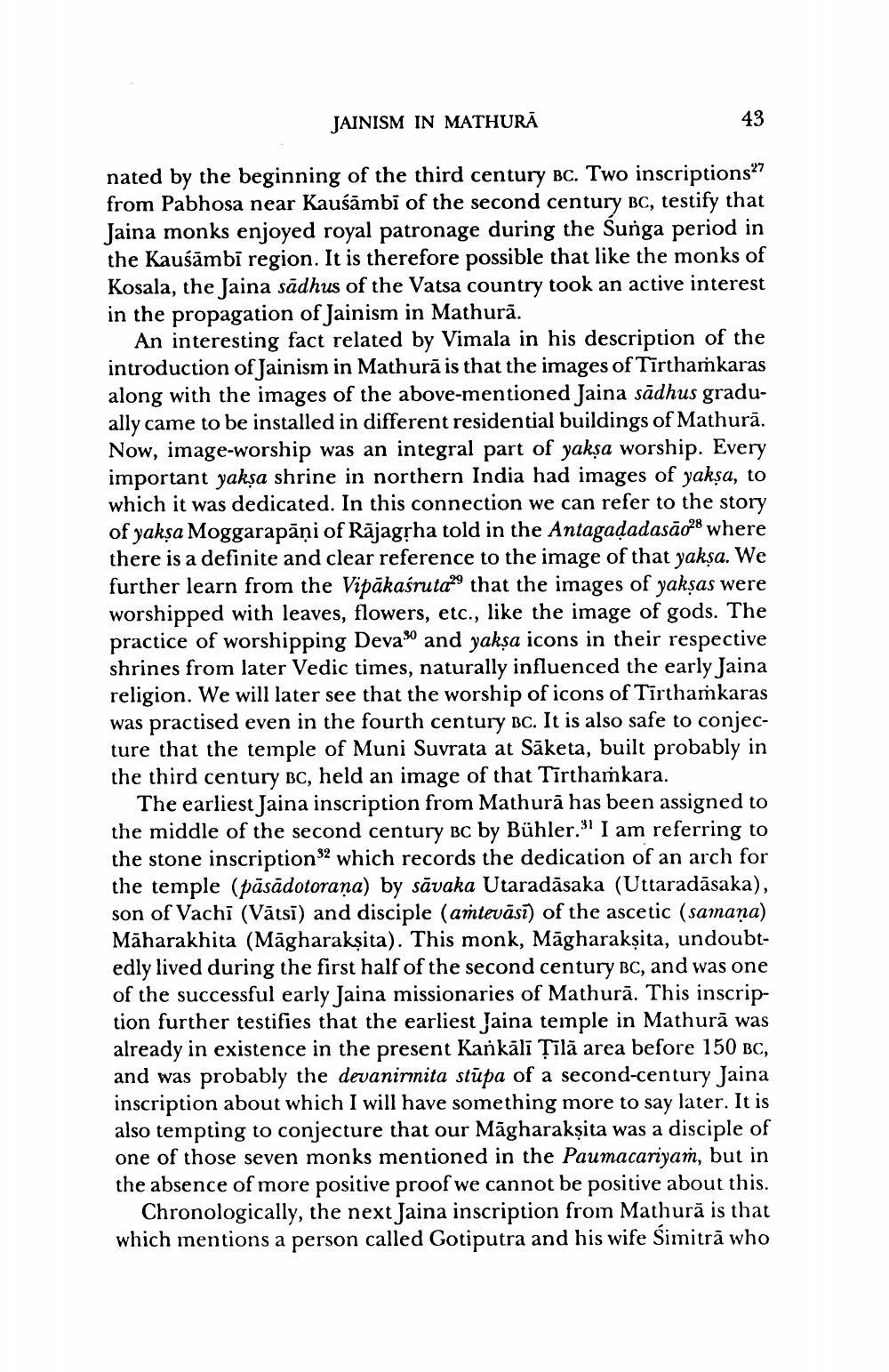________________
JAINISM IN MATHURĀ
43
nated by the beginning of the third century BC. Two inscriptions27 from Pabhosa near Kaušāmbi of the second century BC, testify that Jaina monks enjoyed royal patronage during the Sunga period in the Kauśämbi region. It is therefore possible that like the monks of Kosala, the Jaina sädhus of the Vatsa country took an active interest in the propagation of Jainism in Mathurā.
An interesting fact related by Vimala in his description of the introduction of Jainism in Mathurā is that the images of Tirthamkaras along with the images of the above-mentioned Jaina sādhus gradually came to be installed in different residential buildings of Mathurā. Now, image-worship was an integral part of yakṣa worship. Every important yakşa shrine in northern India had images of yakșa, to which it was dedicated. In this connection we can refer to the story of yakşa Moggarapāņi of Rājagļha told in the Antagadadasā028 where there is a definite and clear reference to the image of that yakșa. We further learn from the Vipākaśrutathat the images of yakșas were worshipped with leaves, flowers, etc., like the image of gods. The practice of worshipping Deva" and yakşa icons in their respective shrines from later Vedic times, naturally influenced the early Jaina religion. We will later see that the worship of icons of Tirthamkaras was practised even in the fourth century BC. It is also safe to conjecture that the temple of Muni Suvrata at Sāketa, built probably in the third century BC, held an image of that Tirthamkara.
The earliest Jaina inscription from Mathurā has been assigned to the middle of the second century BC by Bühler. I am referring to the stone inscriptionwhich records the dedication of an arch for the temple (pāsādotorana) by sāvaka Utaradāsaka (Uttaradāsaka), son of Vachi (Vātsi) and disciple (aộtevāsī) of the ascetic (samana) Māharakhita (Māgharakṣita). This monk, Māgharakṣita, undoubtedly lived during the first half of the second century BC, and was one of the successful early Jaina missionaries of Mathurā. This inscription further testifies that the earliest Jaina temple in Mathurā was already in existence in the present Kankāli Țīlă area before 150 BC, and was probably the devanirmita stūpa of a second-century Jaina inscription about which I will have something more to say later. It is also tempting to conjecture that our Māgharakṣita was a disciple of one of those seven monks mentioned in the Paumacariyam, but in the absence of more positive proof we cannot be positive about this.
Chronologically, the next Jaina inscription from Mathurā is that which mentions a person called Gotiputra and his wife Simitrā who




